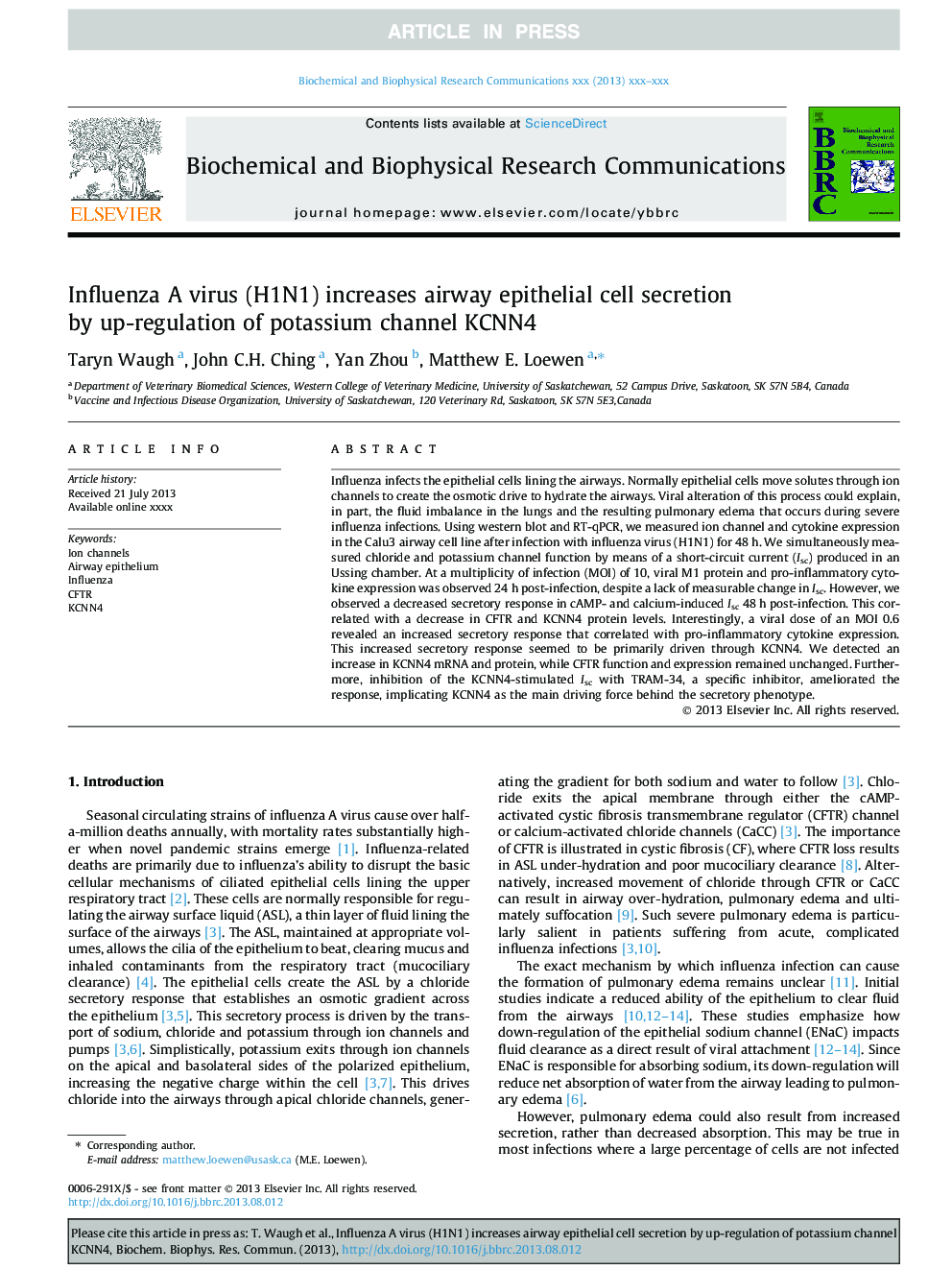| Article ID | Journal | Published Year | Pages | File Type |
|---|---|---|---|---|
| 10757912 | Biochemical and Biophysical Research Communications | 2013 | 7 Pages |
Abstract
Influenza infects the epithelial cells lining the airways. Normally epithelial cells move solutes through ion channels to create the osmotic drive to hydrate the airways. Viral alteration of this process could explain, in part, the fluid imbalance in the lungs and the resulting pulmonary edema that occurs during severe influenza infections. Using western blot and RT-qPCR, we measured ion channel and cytokine expression in the Calu3 airway cell line after infection with influenza virus (H1N1) for 48Â h. We simultaneously measured chloride and potassium channel function by means of a short-circuit current (Isc) produced in an Ussing chamber. At a multiplicity of infection (MOI) of 10, viral M1 protein and pro-inflammatory cytokine expression was observed 24Â h post-infection, despite a lack of measurable change in Isc. However, we observed a decreased secretory response in cAMP- and calcium-induced Isc 48Â h post-infection. This correlated with a decrease in CFTR and KCNN4 protein levels. Interestingly, a viral dose of an MOI 0.6 revealed an increased secretory response that correlated with pro-inflammatory cytokine expression. This increased secretory response seemed to be primarily driven through KCNN4. We detected an increase in KCNN4 mRNA and protein, while CFTR function and expression remained unchanged. Furthermore, inhibition of the KCNN4-stimulated Isc with TRAM-34, a specific inhibitor, ameliorated the response, implicating KCNN4 as the main driving force behind the secretory phenotype.
Related Topics
Life Sciences
Biochemistry, Genetics and Molecular Biology
Biochemistry
Authors
Taryn Waugh, John C.H. Ching, Yan Zhou, Matthew E. Loewen,
